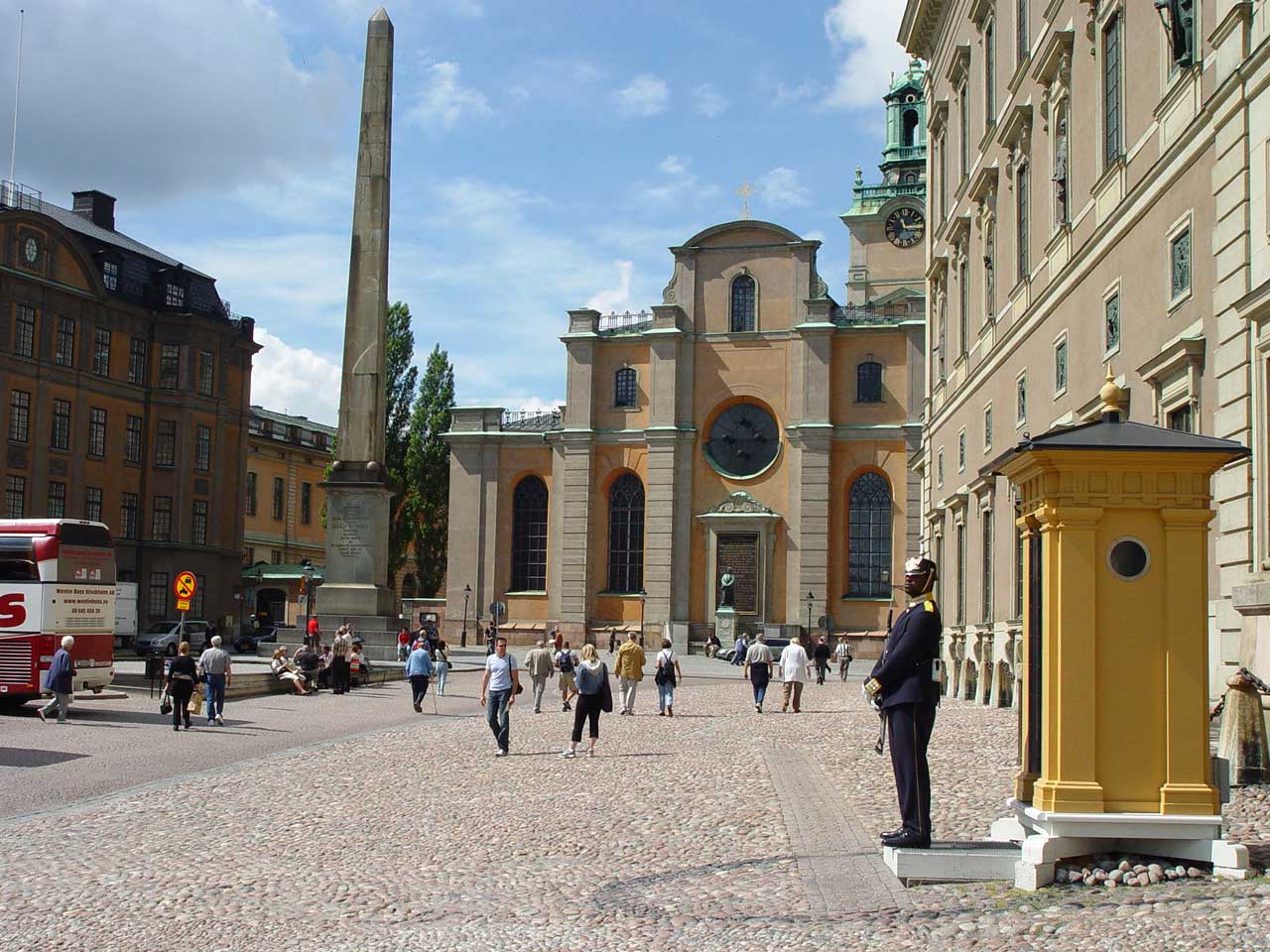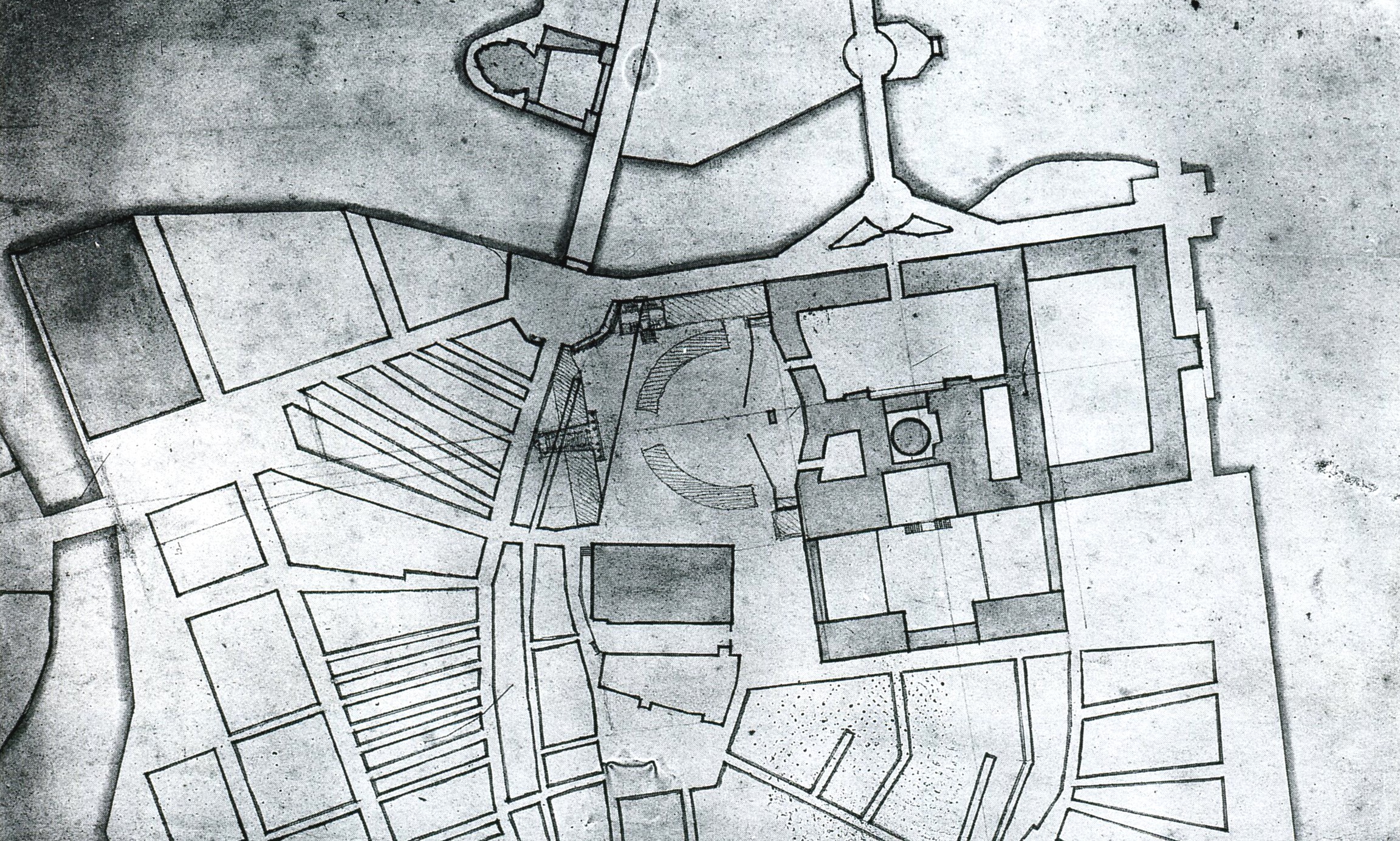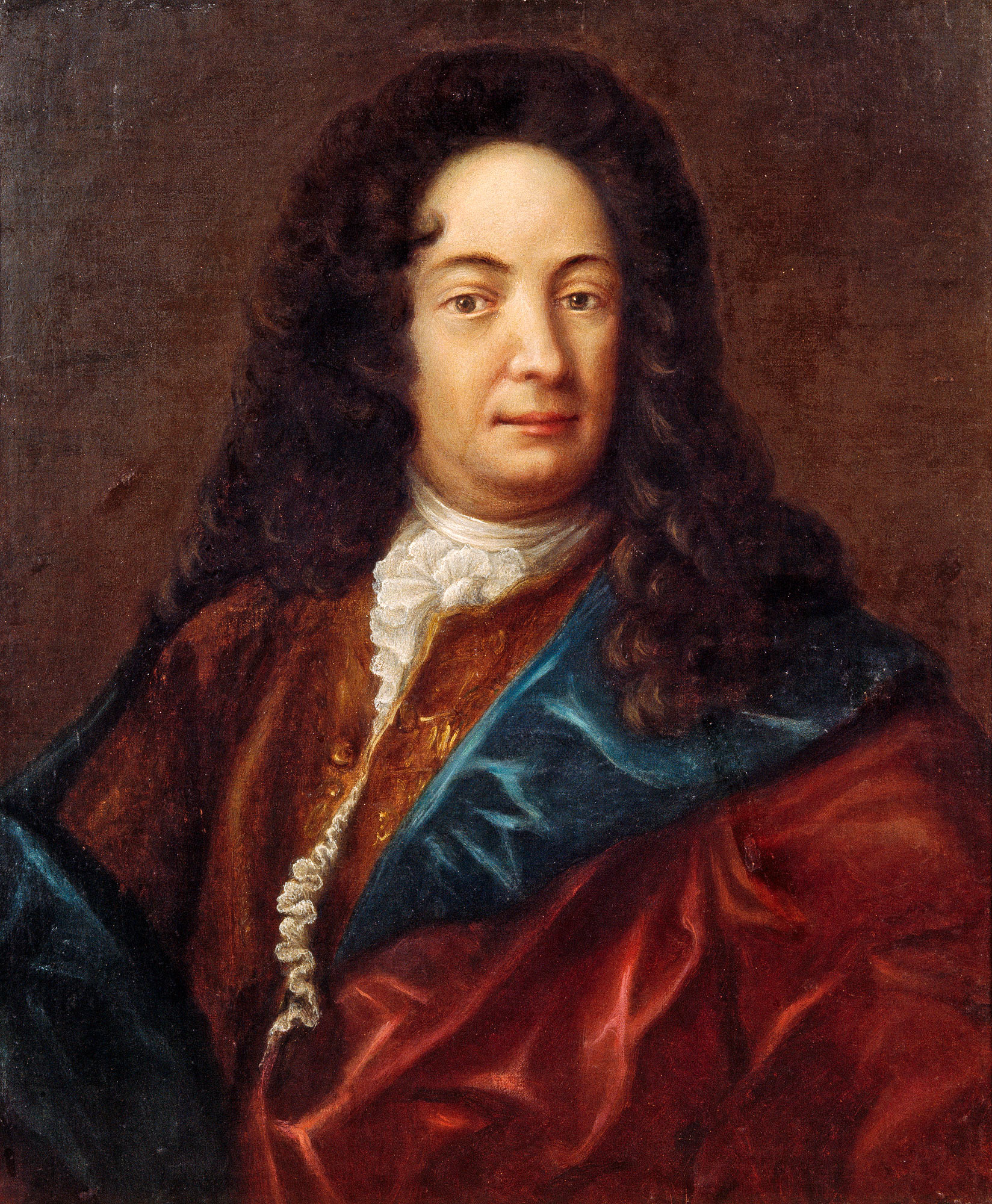|
Slottsbacken
Slottsbacken (, "Castle Slope") is a street in Gamla stan, the old town in central Stockholm, Sweden. It stretches east from the Stockholm Cathedral and the Royal Palace down to the street Skeppsbron which passes along the eastern waterfront of the old town. In the western end, the alley Källargränd leads south to the square Stortorget, while Storkyrkobrinken extends Slottsbacken west beyond the cathedral and Högvaktsterrassen, down to the square Riddarhustorget. On the southern side of Slottsbacken, three alleys connect to the interior throng of the old town: On either side of the Tessin Palace are Finska Kyrkogränd and Bollhusgränd, while Österlånggatan begins in the low-lying eastern part of the slope. History The street, named after the vicinity to the Royal Palace, first appears in historical records during the second half of the 15th century (1476, ''stalbakkan'', "Stable Slope"; 1478, ''Slotz bakkan''), and from early on the name designated not only t ... [...More Info...] [...Related Items...] OR: [Wikipedia] [Google] [Baidu] |
Stockholm Palace
Stockholm Palace, or the Royal Palace, ( or ) is the official residence and major royal palace of the Swedish monarch (King Carl XVI Gustaf and Queen Silvia use Drottningholm Palace as their usual residence). Stockholm Palace is in Stadsholmen, in Gamla stan in the capital, Stockholm. It neighbours the Riksdag building. The offices of the King, the other members of the Swedish royal family, and the Royal Court of Sweden are here. The palace is used for representative purposes by the King whilst performing his duties as the head of state. This royal residence has been in the same location by Norrström in the northern part of Gamla stan in Stockholm since the middle of the 13th century when Tre Kronor Castle was built. In modern times the name relates to the building called ''Kungliga Slottet''. The palace was designed by Nicodemus Tessin the Younger and erected on the same place as the medieval Tre Kronor Castle which was destroyed in a fire on 7 May 1697. Due to the cost ... [...More Info...] [...Related Items...] OR: [Wikipedia] [Google] [Baidu] |
Storkyrkan
Storkyrkan (, ), also called Stockholms domkyrka (Stockholm Cathedral) and Sankt Nikolai kyrka (Church of Saint Nicholas), is the oldest church in Stockholm. Storkyrkan lies in the centre of Stockholm in Gamla stan, between Stockholm Palace and Stortorget, the old main square of Stockholm. It was consecrated to Saint Nicholas in 1306 but construction of the church probably started in the 13th century. Inside, Storkyrkan still maintains much of its late medieval appearance in the form of a hall church with a vaulted ceiling supported by brick pillars. The exterior of the church is however uniformly Baroque architecture, Baroque in appearance, the result of extensive changes made in the 18th century. The church played an important role during the Reformation in Sweden as the place where Mass (liturgy), Mass was celebrated in Swedish for the first time. It currently serves as the seat of the Bishop of Stockholm within the Church of Sweden since the creation of the Diocese of Stockhol ... [...More Info...] [...Related Items...] OR: [Wikipedia] [Google] [Baidu] |
Gamla Stan
Gamla Stan (, "The Old Town"), until 1980 officially Staden mellan broarna ("The Town between the Bridges"), is the old town of Stockholm, Sweden. Gamla Stan consists primarily of the island Stadsholmen. Gamla Stan includes the surrounding islets Riddarholmen, Helgeandsholmen and Strömsborg. It has a population of approximately 3,000. Gamla Stan has played a prominent role in the history of Swedish architecture, with many of Sweden's most renowned architects shaping the area; these include figures such as Nicodemus Tessin and Carl Hårleman, who worked on the Stockholm Palace, still located in the area. Other notable buildings in the old town include Tessin Palace, the Stockholm Stock Exchange Building, Bonde Palace (seat of the Swedish Supreme Court) and the House of Nobility; the last of these buildings hosted the parliament for many years. Overview The town dates back to the 13th century, and consists of medieval alleyways, cobbled streets, and archaic archit ... [...More Info...] [...Related Items...] OR: [Wikipedia] [Google] [Baidu] |
Österlånggatan
is a street in Gamla stan, the old town of Stockholm, Sweden. Stretching southward from Slottsbacken to Järntorget (Stockholm), Järntorget, it forms a parallel street to Baggensgatan and Skeppsbron. Major sights include the statue of Saint George and the Dragon on Köpmanbrinken and the restaurant Den Gyldene Freden on number 51, established in 1722 and mentioned in Guinness Book of Records as one of the oldest with an unaltered interior. History Like Västerlånggatan, Österlånggatan used to pass outside of the city walls and was for many centuries one of the city's major streets. (See Västerlånggatan for more details.) When Skeppsbron, the broad street and quay running to the east of Österlånggatan, was created during the 17th century, Österlånggatan lost much of the importance it used to have. Compared to Västerlånggatan, Österlånggatan is today a relatively quiet street notwithstanding the many restaurants and shops, in sharp contrast to the neighbourhood ... [...More Info...] [...Related Items...] OR: [Wikipedia] [Google] [Baidu] |
Bollhusgränd
Bollhusgränd ( Swedish: "Ball House Alley") is an alley in Gamla stan, the old town in central Stockholm, Sweden. Named after Bollhuset, a historical theatre, it connects Slottsbacken to Köpmantorget, and as Baggensgatan extends the alley further south beyond Köpmangatan, together they form a parallel street to Österlånggatan and Själagårdsgatan. History The alley is named after its vicinity to the two royal ball game buildings constructed in 1627-1792 and 1648–53, the bigger of the two used as a theatre from 1667 and torn down in 1792–93, the smaller transformed into the Finnish Church in 1725 and still existent. In 1648 the alley was known as ''Donat Apotechars grend'' ("Alley of Pharmacist Donat") in reference to a Donat Deutschman living on the southeasternmost corner house facing the square Köpmantorget. On the north-west side of the street is the Tessin Palace, and on the opposite corner is the Royal Coin Cabinet. On the latter location was until 1903 ... [...More Info...] [...Related Items...] OR: [Wikipedia] [Google] [Baidu] |
Skeppsbron
Skeppsbron ( Swedish: "The Ship's Bridge") is both a street and a quay in Gamla stan, the old town of Stockholm, capital of Sweden, stretching from the bridge Strömbron in front of the Royal Palace southward to Slussen. The quay Skeppsbrokajen runs along the street. Several alleys connects Skeppsbron to the thoroughfare Österlånggatan: Slottskajen, Lejonbacken, Slottsbacken, Telegrafgränd, Skeppar Karls Gränd, Bredgränd, Kråkgränd, Nygränd, Brunnsgränd, Skottgränd, Stora Hoparegränd, Drakens Gränd, Ferkens gränd, Gaffelgränd, Johannesgränd, Packhusgränd, Tullgränd, Norra Bankogränd, Södra Bankogränd, Norra Dryckesgränd, Södra Dryckesgränd, Slussplan History Skeppsbron is mentioned as ''Stadzbron'' in 1592, ''skeepzbroon'' in 1647, and finally appears as ''Skeppsbron'' in 1961. While no historical documents knows to tell when or why the decision was taken to develop the eastern waterfront of Stadsholmen in accordance to th ... [...More Info...] [...Related Items...] OR: [Wikipedia] [Google] [Baidu] |
Stortorget (Stockholm)
Stortorget (, "the Grand Square") is a public square in Gamla Stan, the old town in central Stockholm, Sweden. It is the oldest square in Stockholm, the historical centre on which the medieval urban conglomeration gradually came into being. Today, the square is frequented by tens of thousands of tourists annually, and is occasionally the scene for demonstrations and performances. It is traditionally renowned for its annual Christmas market offering traditional handicrafts and food. Notable buildings and structures Located in the centre of the plateau of Stadsholmen, the square never was the stylish show-piece occupying the centre of many other European cities during the Middle Ages; it was created gradually, buildings and blocks around the square, still sloping west, occasionally added haphazardly. The exception being the Stock Exchange Building taking up the northern side of the square and concealing the Cathedral and the Royal Palace. The Stock Exchange Building and th ... [...More Info...] [...Related Items...] OR: [Wikipedia] [Google] [Baidu] |
Tessin Palace
The Tessin Palace () is a baroque town house located in Gamla stan, the old town in central Stockholm Stockholm (; ) is the Capital city, capital and List of urban areas in Sweden by population, most populous city of Sweden, as well as the List of urban areas in the Nordic countries, largest urban area in the Nordic countries. Approximately .... Located next to the Royal Palace, it is facing Slottsbacken, the major approach to the Stockholm Palace, and flanked by two alleys, Finska Kyrkogränd and Bollhusgränd. The mansion was constructed between 1694 and 1700 by architect Nicodemus Tessin the Younger. The building was inherited by Tessin's son Carl Gustaf Tessin who had to sell it in 1755 for financial reasons. The palace later became property of the crown and has been used as residence for the Governor of Stockholm and later Governor of Stockholm County. See also * Architecture of Stockholm References Palaces in Stockholm Baroque palaces ... [...More Info...] [...Related Items...] OR: [Wikipedia] [Google] [Baidu] |
Källargränd
Källargränd is an alley in Gamla stan, the old town in central Stockholm, Sweden, connecting Slottsbacken, the slope south of the Royal Palace, to the square Stortorget. It forms a parallel street to Trångsund and is intercepted by Trädgårdsgatan. The alley is named after the former tavern ''Storkällaren'' ("Great basement"), which in its turn derived its name from the nearby cathedral Storkyrkan. The tavern was located under the town house, where the present Stock Exchange Building is found. The town hall was relocated to the Bonde Palace at Riddarhustorget in 1730, and when the old building was demolished in 1767, the tavern moved to Svartmangatan. The name of the alley survived in various forms: ''Stora Källaregränden'', ''St. Källarbrinken'' (1733), ''Stora Kiällare-Gränden'' (1740) and ''Källar-Gränd'' (1855). A new tavern was opened when the stock exchange was inaugurated, and this remained in business until 1906. The Swedish Academy The Swedish Acade ... [...More Info...] [...Related Items...] OR: [Wikipedia] [Google] [Baidu] |
Finska Kyrkogränd
Finska Kyrkogränd ( Swedish: "Finnish Church Alley") is a blind alley in Gamla stan, an old town in central Stockholm, Sweden Sweden, formally the Kingdom of Sweden, is a Nordic countries, Nordic country located on the Scandinavian Peninsula in Northern Europe. It borders Norway to the west and north, and Finland to the east. At , Sweden is the largest Nordic count .... Leading south from Slottsbacken, the alley separates the Finnish Church from the Tessin Palace. It was also named after the vicinity to the former. It forms a parallel street to Bollhusgränd and Källargränd. The alley, for long the property of the Crown, used to lead to Trädgårdsgatan. It was excepted from a land donation in 1648 for the construction of the Lilla Bollhuset ("Small Ball House"), a building originally intended for ball games but mostly used for theatre. This latter building was rebuilt into the Finnish Church in 1725, and as the Finnish parish later enlarged the building, the ... [...More Info...] [...Related Items...] OR: [Wikipedia] [Google] [Baidu] |
Magnus Stenbock
Count Magnus Stenbock (22 May 1665 – 23 February 1717) was a Swedish field marshal (''Fältmarskalk'') and Privy Council of Sweden, Royal Councillor. A commander of the Caroleans, Carolean Army during the Great Northern War, he was a prominent member of the Stenbock family. He studied at Uppsala University and joined the Swedish Army during the Nine Years' War, participating in the Battle of Fleurus (1690), Battle of Fleurus in 1690. After the battle, he was appointed lieutenant colonel, entered Holy Roman Empire, Holy Roman service as Adjutant General, and married Eva Magdalena Oxenstierna, daughter of statesman Bengt Gabrielsson Oxenstierna. Returning to Swedish service he received colonelcy of a regiment in Wismar, and later became colonel of the Kalmar Regiment, Kalmar and then Dalarna Regiment, Dalarna regiments. During the Great Northern War, Stenbock served under King Charles XII of Sweden, Charles XII in his military campaigns in the Baltic and Polish fronts. As dire ... [...More Info...] [...Related Items...] OR: [Wikipedia] [Google] [Baidu] |




